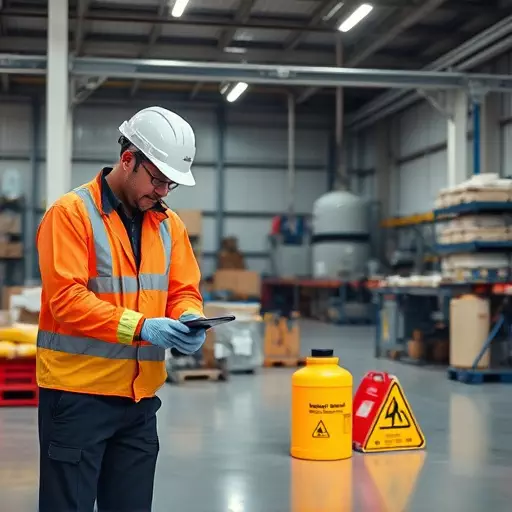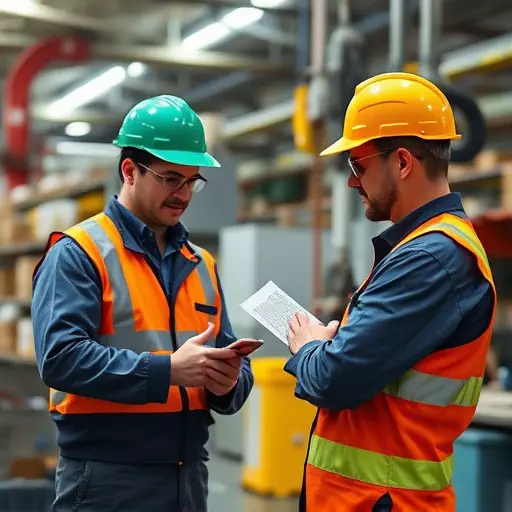Industrial hygiene consultants conduct comprehensive workplace hazard evaluations, analyzing chemical exposures, noise levels, and ergonomics to establish critical occupational exposure limits. By integrating their insights into design, procedures, and policies, organizations create healthier environments that minimize worker exposure to harmful substances, fostering proactive health advocacy and safety culture. Regular reviews ensure the program's effectiveness and adherence to changing work conditions and health standards.
Worker health advocacy programs are essential in ensuring safe and healthy workplaces. This article delves into the critical role of industrial hygiene consultants in promoting employee well-being. We explore key components of a comprehensive workplace hazard evaluation, highlighting strategies to set and enforce occupational exposure limits. By integrating these practices, organizations can protect workers from potential risks, fostering a culture of safety and productivity, guided by experts in industrial hygiene and informed decision-making.
- Understanding Worker Health Advocacy Programs: The Role of Industrial Hygiene Consultants
- Key Components of a Comprehensive Workplace Hazard Evaluation
- Setting and Enforcing Occupational Exposure Limits: A Strategic Approach to Worker Protection
Understanding Worker Health Advocacy Programs: The Role of Industrial Hygiene Consultants

Worker health advocacy programs play a pivotal role in ensuring the well-being and safety of employees within various industries. At the core of these initiatives are industrial hygiene consultants, who possess specialized knowledge and expertise in identifying and mitigating workplace hazards. Their primary duty is to conduct thorough assessments and evaluations of potential risks in the work environment. This involves meticulous analysis of various factors such as chemical exposures, noise levels, and ergonomic considerations, among others.
These consultants are instrumental in establishing occupational exposure limits, which serve as guidelines for maintaining a safe working condition. By integrating their insights into workplace design, procedures, and policies, organizations can create healthier and more productive environments. They facilitate the implementation of control measures to minimize or eliminate worker exposure to harmful substances, thereby fostering a culture of proactive health advocacy.
Key Components of a Comprehensive Workplace Hazard Evaluation

A comprehensive workplace hazard evaluation is a critical step in ensuring worker health and safety. This process involves a thorough assessment of various elements within the work environment, including but not limited to chemical, physical, biological, and ergonomic factors. Industrial hygiene consultants play a pivotal role here, as they possess the expertise to identify potential risks and evaluate their impact on employees. These professionals conduct detailed inspections, analyze air quality, assess noise levels, and study ergonomics to determine any hazards that may lead to occupational diseases or injuries. By employing scientific methods, they can pinpoint sources of exposure and recommend appropriate controls, ensuring compliance with established occupational exposure limits.
A robust hazard evaluation goes beyond identifying issues; it involves prioritizing risks based on severity and likelihood of occurrence. This strategic approach allows organizations to focus on the most pressing matters first. Additionally, it enables them to implement targeted interventions, such as engineering controls, administrative procedures, or personal protective equipment, tailored to each specific hazard. Regular reviews and updates are essential to maintain the program’s effectiveness, reflecting changing work conditions and emerging industrial hygiene standards.
Setting and Enforcing Occupational Exposure Limits: A Strategic Approach to Worker Protection

Setting and enforcing occupational exposure limits is a strategic approach to worker protection that leverages the expertise of industrial hygiene consultants. These professionals conduct thorough workplace hazard evaluations, identifying potential risks and assessing their impact on employees. By utilizing scientific data and industry best practices, they recommend appropriate limits for various substances and conditions, ensuring a safe working environment.
Industrial hygiene consultants play a pivotal role in translating complex health standards into actionable guidelines for businesses. They collaborate with management and workers to implement effective control measures, monitor compliance, and educate staff on the importance of adhering to occupational exposure limits. This multifaceted approach not only protects workers from potential hazards but also fosters a culture of safety and wellness within the organization.


